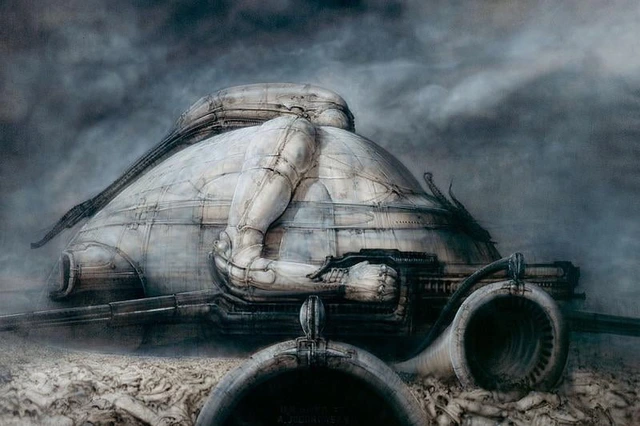Director Denis Villeneuve has revealed the reason why scenes on the planet of the Harkonnen clan are black and white.
Drawing from subtle details in the original novel, Denis Villeneuve continues to innovate.

The dreamy purples, rosy pinks, and strange atomic breath versions of Godzilla have graced the silver screen. Marvel unveils the cast of Fantastic Four: As fans hoped, Pedro Pascal officially joins the MCU. Godzilla × Kong: The New Empire releases a new trailer, unveiling the main antagonist that even the king of monsters fears. “The first” AI child in the world: Possessing extraordinary intelligence, surpassing even the MCU’s JARVIS? Behind-the-scenes photos of Deadpool 3 revealed: The three variants of the “cheeky” mutant reunite in the Marvel multiverse. The article does NOT reveal the movie’s content.
Director Denis Villeneuve’s two-part “Dune” brings readers of the novel a cinematic version closely aligned with the original, while providing audiences with visually stunning feasts. Viewers of “Dune” Part 2, and even those who have followed each trailer of “Dune 2,” have noticed a very distinctive point: the battle scenes of Feyd-Rautha in the arena are all in black and white.
Why is that? The answer to this question comes from two factors: technique and plot.
The visual effects supervisor of “Dune,” Greig Fraser, used infrared cameras to capture … murky footage. The effect immediately impresses viewers: in the early trailers of “Dune” Part 2, the black-and-white scenes make the character Feyd-Rautha (played by Austin Butler) particularly pale, standing out amidst the black-clad figures and the dark arena on the planet Giedi Prime.
In the trailer, the black-and-white scenes on Giedi Prime serve as an “ugly” highlight, just like the Harkonnen clan itself – Video: Warner Bros.
The second reason lies in the creative ability of director Denis Villeneuve. In the original work, Frank Herbert did not provide much information about Giedi Prime – the home planet of the Harkonnen clan. From what readers know, this planet has been “industrialized” extremely, comparable to a heavily polluted wasteland.
In the eyes of director Villeneuve, the Harkonnen clan’s extreme exploitation contrasts with the philosophy of the Fremen tribe – people who nurture a culture closely tied to the native environment. The contrast between the two worldviews is a theme worth delving into.
“I like the way Frank Herbert leads the psychological development of a tribe influenced by the environment. If you want to learn about the Fremen, you have to understand the desert, and then you will know how they think, how they perceive the world, then understand their culture, beliefs, and religion,” said Villeneuve.
However, the pen of the great novelist Frank Herbert did not mention many details about the planet Giedi Prime. Therefore, Denis Villeneuve had to… improvise. He decided to use light to tell another aspect of the story.
“I want to find something sensual and cinematic to depict the Harkonnen clan,” Villeneuve told Polygon.
“I want [Giedi Prime] to be unique, and through it, we know about the origin of the political system of the clan; the origin of their sensitivity, aesthetics, manner, and their relationship with nature. I think a sun that takes away colors instead of revealing them will say a lot about how the Harkonnen clan behaves and thinks.”
Director Denis Villeneuve’s adaptation of details from the original work aligns perfectly with the author’s intent.
In an interview with literature professor Willis E. McNelly in 1969, Frank Herbert acknowledged that he included many small details in Dune but did not develop them. He hoped readers would find these details interesting and develop them according to their imagination.
Director Villeneuve is simply… the latest “victim” of this ideal. Before, countless Dune readers had also creatively supplemented very interesting details to the Dune universe.
In the Dune Encyclopedia, Professor McNelly and 42 loyal readers of the novel described many aspects not developed in Dune, such as the technology behind the Fremen’s stiltsuit, the main character’s biography, the structure of organizations like the Bene Gesserit or Mentats, the properties of spice, or the planets in Dune.
By successfully bringing Dune to the big screen, director Denis Villeneuve has accomplished two things at once. He created a masterpiece from a novel that was thought to be “unfilmable,” and continued the creative ideal that the great author Frank Herbert set.
“What I like about [producer] Mary Parent is that she is very good, she is not dominated by fear, and she supported this idea one hundred percent,” Villeneuve added.
